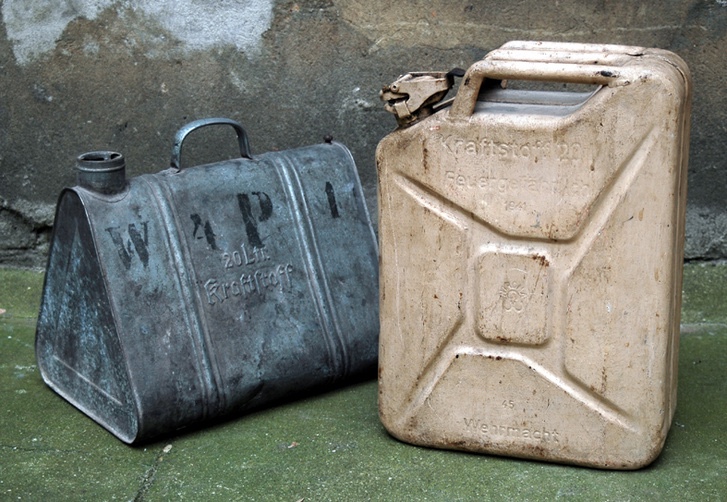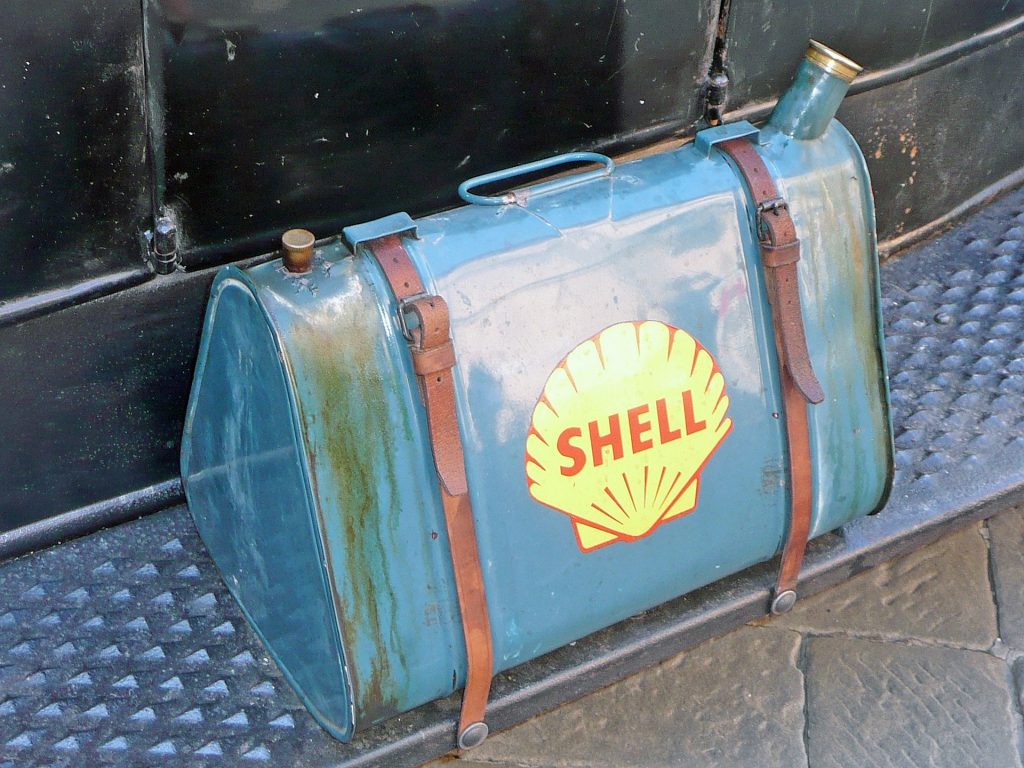20 litre fuel cans: old design on the left, 1941 Nirona Wehrmacht fuel can on the right

The metal fuel can, known as the marmonade can, is a hidden legend of design. Although its popularity dates back to the Second World War, the secret of its overwhelming success lies in a series of clever details.

The modern-day can was designed by the chief engineer Vinzenz Grünvogel of Schweim Müller and Co. in 1936. The requirements of the German armed forces were clear: they wanted a 20-litre hand-held canister from which a soldier could carry two fulls or four empties.

Müller’s tank therefore had three handles, but it was much more than that: it was easy to fill and empty thanks to its large spout and built-in aerator, and it was easy to close. Its brick shape made it stackable, unlike its triangular predecessors. Rounded corners and a notch designed into the side made it able to withstand being dropped from the vehicle. And thanks to the air retained in the hump behind the handles, it didn’t sink when dropped in water.
The device was tested in the Spanish Civil War and, with slight modifications, was put into service by the German armed forces in 1937, who immediately began to accumulate thousands of units in preparation for war.
Everyone had to have one
In 1939, American engineer Paul Pleiss first encountered the can on a joint road trip to India with a German colleague. He managed to take one home with him and took it to the US War Department, where he was immediately met with total disinterest, but eventually they took it over and redesigned it with their own specialists. The American version had a simple X-shaped recess, the can mouth threaded and openable only with a wrench, held together by a leak-prone pressed joint instead of welding.
The can thus became more humble, but more mass-producible and lighter, the significance of which became clear later, when 19 million jerrycans (the name of the can still shows where it came from: jerry is a Germanic ‘nickname’ for German) were needed in the European theatre of war alone, and the speed of the advance depended on the production limitations of the canisters and the lack of fuel they carried.
President Roosevelt himself said as much:
Without these canisters, it would have been impossible for our armies to cut their way through France at lightning speeds even exceeding those of the German blitzkrieg of 1940.
The British were even quicker to see the benefits of the design when they first encountered the canister in Norway. Until then, they had been using 4-gallon tinplate tanks, which were expensive and very fragile. The easily punctured and ruptured tanks lost an average of a quarter of their fuel, and on one occasion a ship was lost due to the ignition of naphtha that had accumulated inside the deck.
The British immediately put into service all those captured from the Germans, as did the Soviet army, which also systematised and has continued to produce them in Russia ever since.
As far as we are concerned, the Hungarians also became familiar with the famous tank during the Second World War, and here, strangely enough, the name of an American engineering dynasty, the Marmon family, stuck to it. The reason for this is that the Hungarian Royal Hungarian Army bought a large number of Ford trucks manufactured in Cologne, but these were two-wheel drive, so they were subsequently converted to four-wheel drive to meet military requirements using a patented Marmon-Herrington solution. The trucks were then called Ford-Marmon or just Marmon, and the cans that came with them were called Marmon cans.
What got this to do with Ex? A lot!
First of all more than 5 litres in one. So hazardous. Is there any emmission source? If not proper handling, yes. See manual filling… all need considerations in terms of Ex compliance.
Keep up good work!
Arpad





